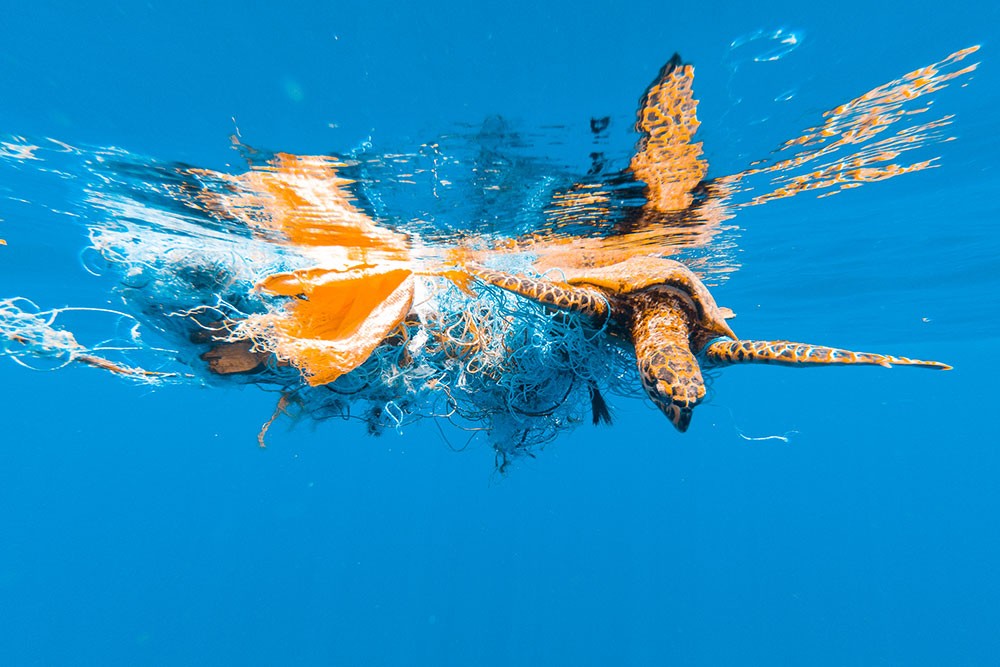
Experts are warning that boosting sustainable practices and improving green reporting standards are only part of the solution to a sustainable future. What is also needed are alternatives to excessive consumption, both at work and at home.
The United Nations reported in April that, over the past three decades, the amount of raw materials extracted from the earth worldwide has more than doubled, and is expected to double again by 2060.
'Buying less is better than buying green'
This unsustainability contrasts with that of the ‘circular economy’, in which products and materials are designed to be reused, remanufactured, recycled or recovered, allowing them to remain of economic value for far longer periods and take part in successive production cycles.
According to the Ellen MacArthur Foundation, a UK charity set up to promote the circular economy in business and policy-making, there are three key principles in this approach to resources:
- the elimination of waste and pollution
- the recirculation of products and materials
- the regeneration of nature.
Dressed to kill
The United Nations says that the textile industry is a good candidate for deeper engagement in the circular economy. It describes the sector as ‘a major source of pollution and waste’, characterised by the overconsumption of low-cost clothes that end up in landfill.
The US has the world’s highest textile consumption rate per person, followed by Australia, according to the Australasian Circular Textile Association (ACTA). In a report for the New South Wales Environment Protection Authority, ACTA has calculated that each Australian consumes an average of 27kg of new clothing a year and sends an average of 23kg of clothing to landfill each year, which accounts for 93% of all the textile waste generated by Australia.
Worldwide, the clothing and footwear sector is responsible for 5%–10% of global carbon emissions. In 2018 alone, according to McKinsey research, the sector produced 2.1 billion tonnes of greenhouse gas emissions, about 4% of the global total.
At the current pace, the figure is set to surge by 50% by 2030, according to UK-based charity WRAP, which works with governments, businesses and citizens to create a world in which resources are used sustainably.
Missing the point
David Cooke, chair of the UN Global Compact Network Australia, which promotes sustainable development goals (SDGs) in the country’s corporate sector, says too many people and businesses promote recycling but neglect the ‘front end of the equation’ – the decision about whether they really need the product in the first place.
Reduced consumption is key to any sustainable business practice, he says, adding that donating equipment such as laptops and phones to charities rather than dumping them could make a big difference.
‘The circular economy in which you think thoughtfully about how products can be reused rather than dumped is a practical way business can do more for sustainability,’ he says.
'The concept of sustainability gives the impression we could all go on living exactly as we live today'
University of Arizona researchers analysed the buying habits of millennials and the consumption reduction that can be achieved by repairing old items and avoiding impulse purchases, as well as ‘green buying’ (the deliberate purchase of products designed to have a lesser environmental impact).
The 2019 study measured materialism, proactive financial behaviour and pro-environmental practices among 968 Americans aged 18–26. Participants who reported fewer materialistic values were much more likely to engage in consumption reduction, which was in turn linked to higher personal wellbeing and lower psychological distress.
‘Buying less is better than buying green,' said researcher Sabrina Helm. 'If you are able to buy environmentally friendly products, you can still live your materialist values. You're acquiring new things, and that fits into our mainstream consumption pattern in our consumer culture, whereas reduced consumption is more novel and probably more important from a sustainability perspective.’
Untamed appetite
There is evidence, though, that the world is deaf to this message and is consuming more. The thinktank Circle Economy measures the proportion of recovered materials as a percentage of overall materials used, known as the global circularity rate. In its 2021 Circularity Gap Report, Circle Economy measured the circularity rate as falling to 8.6%, down from 9.1% in 2018.
Part of the problem, according to Christopher Barnatt, associate professor of strategy and future studies at Nottingham University Business School, is that sustainability itself is ‘a dangerous concept’.
Barnatt says: 'It gives the impression that we could all go on living exactly as we live today but sustainably – with this sort of magic thing wrapped around it. The only way we can actually preserve things for the future and look after the environment is to change how we live, to use fewer resources, to value things in another way.’
Make manufacturers responsible
One way to shift the focus may be to make manufacturers responsible for recycling their own products at the end of their lifecycles, according to Berkeley University researchers Jessica Heiges and Kate O’Neill. They note that some US states have made manufacturers legally responsible for product waste, such as electronic devices, car batteries, mattresses and tyres.
In Maine (from mid-2024) and Oregon (from mid-2025), companies that make cardboard boxes, plastic wrap and food containers will also be made responsible for their recycling and disposal.
Such measures shift waste management costs from customers and local councils to producers. Lawmakers, it seems, have realised what finance professionals have long known: that the best way of all to make something happen – in this case, sustainability – is to make it the responsibility of business.


